
Discussion:
(Instructor: distribute C Minor worksheets before starting lesson.)
Last time we discussed the Minor Scale and used the formula (W-H-W-W-H-W-W) to figure out the notes of the C Minor scale. What is the general mood or feeling of the Minor Scale? How is it different from the Major scale?
Today, using your worksheet from last time, you are going to make a beat in the key of C Minor. Ready? Let’s do it…
Please do the following:
1. Open Reason and create a new file.
2. Create a Redrum and load some sounds into it (bass, snare/clap, hi hat, percussion, etc.)
3. Make a 32-step drum beat.
4. Set your L marker to Bar 1 and your R marker to Bar 17.
5. Use Copy Pattern to Track to put the beat into the Sequencer.
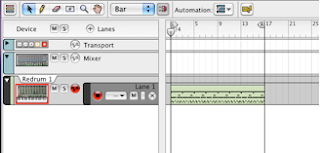 6. Now, click on Pattern 2 and make a 2nd drum beat (16-step is fine).
6. Now, click on Pattern 2 and make a 2nd drum beat (16-step is fine).7. Move your L marker to Bar 17 and your R marker to Bar 25.
8. Use Copy Pattern to Track to put the beat into the Sequencer.
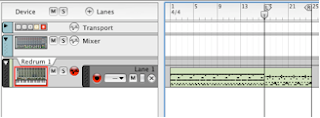 9. Now Create a SubTractor Analog Synthesizer.
9. Now Create a SubTractor Analog Synthesizer.10. Click on the Browse Patch button
11. Browse through the different folders until you find a sound that you like. Double-click on it to load it into the Subtractor.
12. In the Sequencer, move the L marker back to Bar 1 and the R marker back to Bar 5 and hit Play to listen to your beat play back.
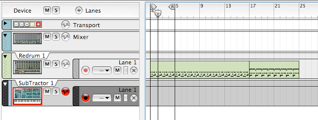 13. Look at your worksheet and see what notes are in the C Minor scale.
13. Look at your worksheet and see what notes are in the C Minor scale.14. Using only the keys of the C Minor Scale, come up with a melody to go with the beat...
- The first note you play has to be C!
- The other notes should all be from C Minor, but you can play them in any order you want.
 16. Use OPTION-drag to Copy out your melody so that it ends on Bar 25.
16. Use OPTION-drag to Copy out your melody so that it ends on Bar 25.  17. Now move your markers so that the L is on Bar 17 and the R is on Bar 25.
17. Now move your markers so that the L is on Bar 17 and the R is on Bar 25.18. Create a 2nd Subtractor and load a different sound into it. (Try to pick a sound from a different folder than your first sound.)
19. Again, using only keys from C Minor, come up with a second melody to go over the first one during the hook.
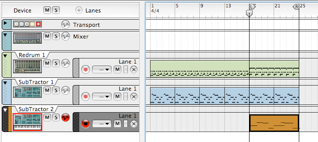
20. When you're done, move the L marker back to Bar 1 and play the whole thing back from the start. Sound good? If not, what can you change to make it better?
21. Add any other instruments that you like.
22. Save this as: your name_CMinorBeat
23. Have the instructor listen to your work.
(Instructor: Advanced students can be encouraged to either add more instruments to their beat, or make a new beat using a different Minor scale. Students can use either their worksheets and the formula, or the looknohands.com website to figure out the notes of the scale.)
Resources
www.looknohands.com - website for figuring out scales
Here’s how to use the looknohands website to listen to the A Minor scale:
1. Click on the link to go to http://www.looknohands.com/chordhouse/piano/
2. In the Scales column, click on a key (eg. A)
3. In the list of REGULAR SCALES, click on Melodic Minor (Descending).
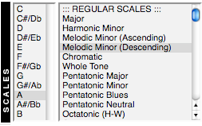
4. Note the keys of the scale are now shown up in the keyboard diagram.

5. Click on the Play button to hear the scale.

6. When you've heard enough, click the Stop button.

No comments:
Post a Comment